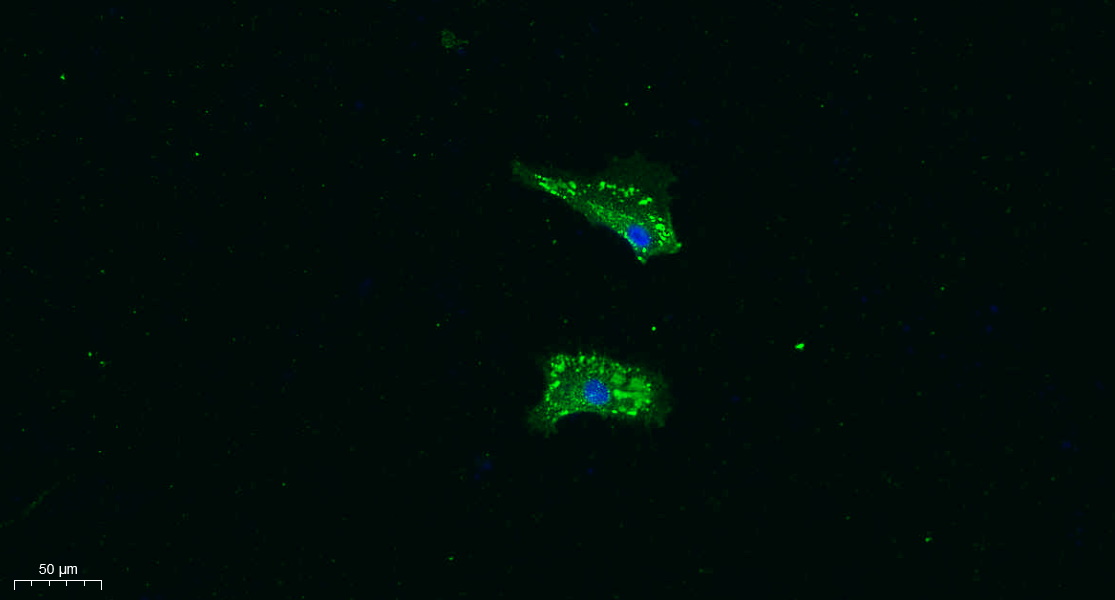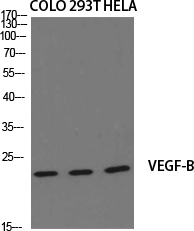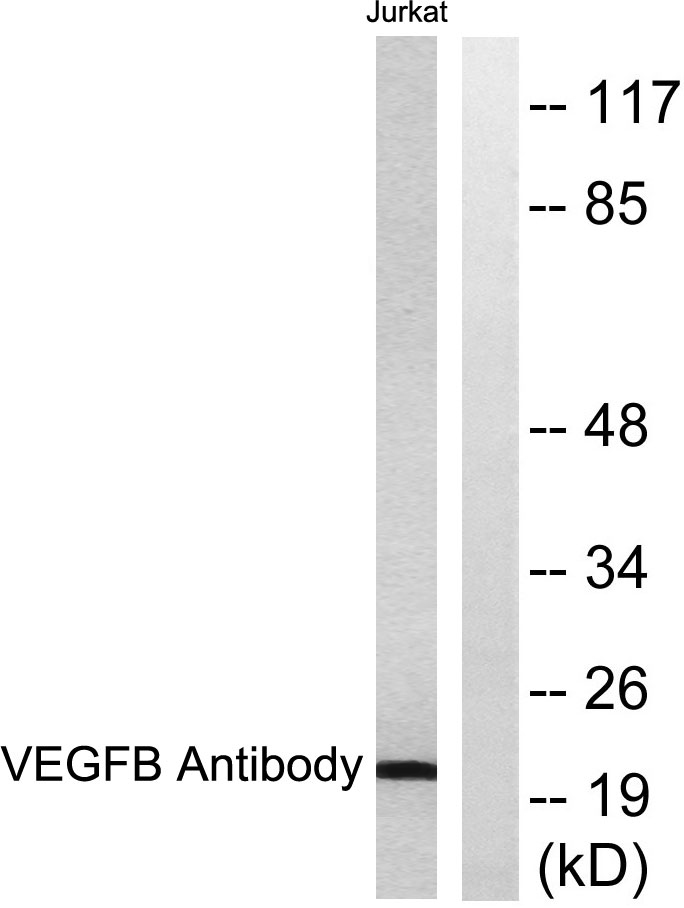VEGF-B Polyclonal Antibody
- Catalog No.:YT4871
- Applications:WB;IHC;IF;ELISA
- Reactivity:Human;Mouse;Rat
- Target:
- VEGF-B
- Fields:
- >>MAPK signaling pathway;>>Ras signaling pathway;>>Rap1 signaling pathway;>>Calcium signaling pathway;>>PI3K-Akt signaling pathway;>>Focal adhesion;>>Relaxin signaling pathway;>>AGE-RAGE signaling pathway in diabetic complications;>>Pathways in cancer
- Gene Name:
- VEGFB
- Protein Name:
- Vascular endothelial growth factor B
- Human Gene Id:
- 7423
- Human Swiss Prot No:
- P49765
- Mouse Gene Id:
- 22340
- Mouse Swiss Prot No:
- P49766
- Rat Gene Id:
- 89811
- Rat Swiss Prot No:
- O35485
- Immunogen:
- The antiserum was produced against synthesized peptide derived from human VEGFB. AA range:91-140
- Specificity:
- VEGF-B Polyclonal Antibody detects endogenous levels of VEGF-B protein.
- Formulation:
- Liquid in PBS containing 50% glycerol, 0.5% BSA and 0.02% sodium azide.
- Source:
- Polyclonal, Rabbit,IgG
- Dilution:
- WB 1:500 - 1:2000. IHC: 1:100-300 ELISA: 1:20000. IF 1:100-300 Not yet tested in other applications.
- Purification:
- The antibody was affinity-purified from rabbit antiserum by affinity-chromatography using epitope-specific immunogen.
- Concentration:
- 1 mg/ml
- Storage Stability:
- -15°C to -25°C/1 year(Do not lower than -25°C)
- Other Name:
- VEGFB;VRF;Vascular endothelial growth factor B;VEGF-B;VEGF-related factor;VRF
- Observed Band(KD):
- 21kD
- Background:
- This gene encodes a member of the PDGF (platelet-derived growth factor)/VEGF (vascular endothelial growth factor) family. The VEGF family members regulate the formation of blood vessels and are involved in endothelial cell physiology. This member is a ligand for VEGFR-1 (vascular endothelial growth factor receptor 1) and NRP-1 (neuropilin-1). Studies in mice showed that this gene was co-expressed with nuclear-encoded mitochondrial genes and the encoded protein specifically controlled endothelial uptake of fatty acids. Alternatively spliced transcript variants encoding distinct isoforms have been identified. [provided by RefSeq, Sep 2011],
- Function:
- alternative products:Additional isoforms seem to exist,function:Growth factor for endothelial cells. VEGF-B167 binds heparin and neuropilin-1 whereas the binding to neuropilin-1 of VEGF-B186 is regulated by proteolysis.,PTM:VEGF-B186 is O-glycosylated.,similarity:Belongs to the PDGF/VEGF growth factor family.,subcellular location:Secreted but remains associated to cells or to the extracellular matrix unless released by heparin.,subunit:Homodimer; disulfide-linked. Can also form heterodimer with VEGF.,tissue specificity:Expressed in all tissues except liver. Highest levels found in heart, skeletal muscle and pancreas.,
- Subcellular Location:
- Secreted. Secreted but remains associated to cells or to the extracellular matrix unless released by heparin.
- Expression:
- Expressed in all tissues except liver. Highest levels found in heart, skeletal muscle and pancreas.
SALL4 promotes angiogenesis in gastric cancer by regulating VEGF expression and targeting SALL4/VEGF pathway inhibits cancer progression. Xu Zhang WB Human MKN-45 cell, MGC-803 cell, HGC-27 cell
Hemodynamic force dictates endothelial angiogenesis through MIEN1-ERK/MAPK-signaling axis JOURNAL OF CELLULAR PHYSIOLOGY Lin Cheng WB,IF Human Human umbilical vein endothelial cells (HUVECs)
- June 19-2018
- WESTERN IMMUNOBLOTTING PROTOCOL
- June 19-2018
- IMMUNOHISTOCHEMISTRY-PARAFFIN PROTOCOL
- June 19-2018
- IMMUNOFLUORESCENCE PROTOCOL
- September 08-2020
- FLOW-CYTOMEYRT-PROTOCOL
- May 20-2022
- Cell-Based ELISA│解您多样本WB检测之困扰
- July 13-2018
- CELL-BASED-ELISA-PROTOCOL-FOR-ACETYL-PROTEIN
- July 13-2018
- CELL-BASED-ELISA-PROTOCOL-FOR-PHOSPHO-PROTEIN
- July 13-2018
- Antibody-FAQs
- Products Images

- Immunofluorescence analysis of A549. 1,primary Antibody was diluted at 1:200(4°C overnight). 2, Goat Anti Rabbit IgG (H&L) - Alexa Fluor 488 Secondary antibody was diluted at 1:1000(room temperature, 50min).3, Picture B: DAPI(blue) 10min.

- Western Blot analysis of various cells using VEGF-B Polyclonal Antibody diluted at 1:2000. Secondary antibody(catalog#:RS0002) was diluted at 1:20000
.jpg)
- Western Blot analysis of Jurkat cells using VEGF-B Polyclonal Antibody diluted at 1:2000. Secondary antibody(catalog#:RS0002) was diluted at 1:20000

- Western blot analysis of lysates from Jurkat cells, using VEGFB Antibody. The lane on the right is blocked with the synthesized peptide.

- Immunohistochemical analysis of paraffin-embedded human tonsil. 1, Antibody was diluted at 1:200(4° overnight). 2, Tris-EDTA,pH9.0 was used for antigen retrieval. 3,Secondary antibody was diluted at 1:200(room temperature, 30min).


